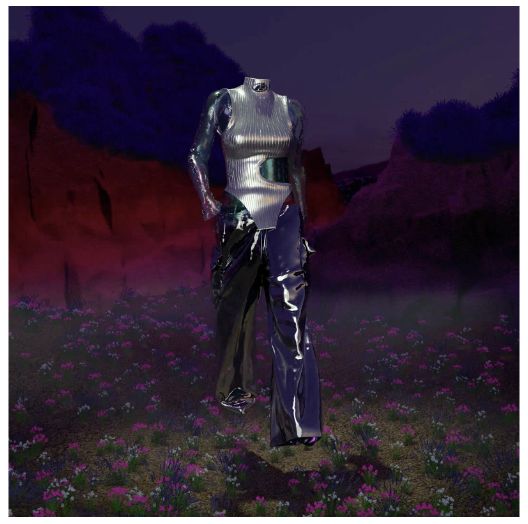Many have argued how co-creation will ultimately lead to the democratization of the creator class, re-imagine fandom, and turn fans into creators; however, this discussion stops short of the implications of co-creation on brands, which could be larger than the impact on co-creators themselves.
In the past, brands created products and, more generally, culture, and proliferated this top-down via centralized, top-down media (Toby Shorin). Social media inverted the communication media, and naturally the proliferation of culture, which, in turn, sparked the first wave of massive-scale co-creation between brands and their communities. Just as consumers could, for the first time, display products on social media to signal participation in a specific culture, so too could they shape that very culture by sharing feedback, thoughts, and suggestions on said products, and in turn, the brands creating them. Thus, brands influenced consumers who, in turn, influenced brands, and so began the cycle of co-creation.
However, despite the fact that consumers were contributing value in the co-creation process, they didn’t receive any financial value in return; brands captured 100% of the economics. In short, successful web2 brands built on top of their communities, and ate the whole pie.
Successful web3 consumer brands will build alongside their communities, formalize the co-creation process, and reward their communities in turn—growing and sharing the pie together.
How Brand Culture is (Co-)Created
Starbucks is—quite clearly—much more than a brand. It is a lifestyle of “extreme productive leisure.” It is a semi-public utility, a “third place” of society, if you will. Simply put, Starbucks is a culture. But once upon a time, it was just…coffee.
In defining “How Brands Were Born,” Marc de Swaan Aron argues that the 20th Century brought the standardization of quality products for consumers, “requiring companies to find a new way to differentiate themselves from their competitors”—and thus, modern marketing was born. Rather than focusing on the functional value of a product, marketers engendered emotional connections with consumers to differentiate from competitive offerings. Then brands started attaching themselves to subcultures and projecting those onto their consumer—said another way: brand culture was created top down.
“Under CPSE models, companies brand products. They point to subcultures to justify the products’ existence, and use data marketing to sort people into startpack-like demographics. Subcultures become consumerized subcultures, composed of products. In the new cultural economy, the culture is the product. It is composed of practices, ideas, and discourses. Products are auxiliary, supportive, but not the main event.” -Toby Shorin, Life After Lifestyle
As religion declined across the Western world, consumers began to seek meaning, identity, and belonging elsewhere – such as influencers (the new ‘guru’, according to Helen Lewis), or more importantly, from brands. It was not enough for brands to merely be attached to a subculture—brands recognized the need to become culture. Separately, but in parallel, as the internet drove the cost of production and distribution to zero, the only scarce resource left was consumer attention, and, as Joey Debruin eloquently argues, communities—as a very cost effective way to capture consumer attention—thus became more valuable than ever.
These trends collided with a profound implication for brands. Communities became increasingly important, and brands could not create culture without their consumers, and thus brand culture became co-created.
“People co-create their identities with brands just as they do with religions, communities, and other systems of meaning. This constructivist view is incompatible with popular forms of postmodern critique but it also opens up new critical opportunities. We live in a time where brands are expected to not just reflect our values but act on them. Trust in business can no longer be based on visual signals of authenticity, only on proof of work." -Another excellent Toby Shorin quote from After Authenticity
From User-Generated Content (UGC)…
Culture is, and always has been, disseminated through content. When information was broadcast via top-down media (radio, television, newspapers, etc.), culture propagated in a top-down fashion as well. This changed with the advent of social media. On Instagram and TikTok, content creation became democratized and decentralized—and thus, so did culture. Thus, when brands recognized the need to co-create culture with their communities, they turned to social media—and UGC—to do it.
Rather than simply encouraging consumers to post photos of themselves wearing bright Outdoor Voices leggings on hikes, brands solicited real-time feedback, ideas, requests, and more from their communities. In turn, communities shifted from co-creating content to co-creating products as well.
Glossier defined the direct-to-consumer (DTC)-era with this approach, too, and it was the input from their Slack community that convinced them to use pumps instead of jars, introduce a mineral sunscreen, and much, much more. Since then, community co-creation has been codified into the modern marketing playbook across industries, by brands such as Samsung, Supergoop, Chipotle, Ikea, Lego, Unilever and more—in fact, a whole book has been written on the subject.
But still, several important questions remain: What did the originator of the Hazelnut Macchiato receive for submitting their idea to Starbucks? What about the member of Glossier’s Slack channel responsible for pointing out that pumps are hygienically superior to jars?
…To User-Generated Products (UGP)
Co-creation has an attribution problem, and web3 solves it.
To borrow an idea from Marty Bell, the founder of Vacation and Poolsuite, the brands of the future will look much more like an “Open Corporation,'' where brands build the products their communities want alongside the communities themselves. In his words:
“What I thought was the right thing to do for years with the brands and businesses I built was hideaway with my team, be very quiet, work away on something and then come out with a finished product and say, here's our new product… And what I want the NFTs to do from now on going forward is to allow people to come into the process and build with us. So instead of all of that happening behind closed doors, I think that should all happen in the open… And I see it as like an Open Corporation, where instead of doing everything behind closed doors, and announcing it, you start off with the seeds of ideas. And there's maybe 20 seeds of ideas we have right now for what we want to do next. And we're equally excited about all of them, it doesn't matter to us. What matters most is what our community is most excited about, because that's what's going to work out the best, is if everyone who follows along with us wants to be really involved with something.”
Web3 primitives catalyze co-creation (and thus future ‘Open Corporations’) via two mechanisms: facilitating more effective human coordination, and improving attribution.
Human Coordination: In any heterarchical organization (so, much of web3), communities are confronted with the problem of how to make collective decisions. This is particularly true with regards to co-creation which, in turn, requires significant, and precise, human coordination. Tokens are a useful coordination tool that allow brands to prove membership, allow for credential verification, authorize permissions, enable voting mechanisms, and more.
Attribution: As we have spent much of this piece discussing, brands are already co-creating with their consumers—the problem lies in the lack of social and financial recognition awarded to those contributors. However, to quote Sari Azout in her brilliant Attribution+ piece:
"The true power of Web3 technologies is the potential to reshape how value is created, shared, and distributed on the Internet, making distributing value as easy as sending and receiving an email. That’s a fundamental technology unlock that makes it possible for creators on the internet to earn more of the value they create."
Tokens enable brands to not only attribute social recognition, through the recording of provenance and thus the origination point of ideas and more, but to route financial value to those who own these ideas as well.
We see several opportunities for entrepreneurs, developers and brand builders to build a new class of brands leveraging new collaborative strategies that foster increased participation, sales, loyalty, and retention as they align their values with those of their communities. There are three major categories of co-creation: individual creation, cohort creation, and community creation.
Individual Creation: In the future, brands will release blank canvas digital products (essentially mutable NFTs) as ‘templates’, with the intention of having consumers remix them according to their own tastes. Imagine a white, base model Porsche car, or Air Jordan shoes that consumers can then design entirely according to their unique vision.
Each consumer will own their uniquely-designed digital good, with the opportunity to produce a 1-of-1 physical twin. Furthermore, communities may vote on the collection of creations in order to select one design that will then be made available to the mass market.
Great examples include Nike x RTFKT’s ‘Your Force One’ project, where CloneX holders can design their own Air Force 1’s, with the opportunity to see them developed IRL. Similarly, the latest Porsche NFT drop allows holders to design their own dream Porsche, with the community able to vote on their favorite project, and eventually see that car racing down the Autobahn.
Cohort Creation: A cohort can consist of any group of people, ideally between 5-50 people, coming together with the common goal of producing a product, or limited collection of products. This might bring to mind Yancey Stricklers’ concept of a MetaLabel, which he defines as “a group of people using a common identity for a common purpose with a focus on public releases that manifest their worldview”. In this instance, the cohort works alongside the brand in the pursuit of product building.
Effekt, a digital fashion co-creation platform, recently launched their first cohort co-creation project, paving the path forward in this space. A group of 20 global community members gathered in a Discord chat to help co-create the brand’s first in-house fashion piece. Over a series of weeks, the cohort collaborated to curate mood boards and inspiration, input design suggestions, and facilitate the design process through voting polls, written and imagery proposals, and other feedback systems. While the cohort provided all suggestions and feedback, ultimately the end-product was produced by Effekt, allowing them to engage their community, while still retaining some control over the outcome. The digital fashion piece that the cohort produced is set to be sold as a limited edition NFT, with revenue split between Effekt and the co-creators.
 The Final Effekt Co-Created Digital Fashion Piece
The Final Effekt Co-Created Digital Fashion Piece
Turning from a real world example to a hypothetical one, we can imagine a brand like Rebecca Minkoff enlisting a small, exclusive cohort of ~20 consumers to co-create a capsule collection. Members might be selected to be a part of the cohort based on their past credentials, verified by Guild—whether that be owning an Access NFT, brand purchase history, winning a design competition, etc. Once selected, members could gather in a small Geneva chatroom to provide design suggestions, provide feedback on fabrics, and vote on outcomes—perhaps mediated by a governance tool like JokeDAO. The Access NFTs might have smart contracts embedded that enable revenue share from sales of the collection, or instead, each cohort member receives the collection in its entirety through a digital fashion marketplace like DressX. The surface area for coordination here is vast.
Community Creation: Further possibilities include an entire brand born out of a tokenized community that comes together to decide what products they want to see in the world, much like CPG Club, or Poolsuite. While decentralization of ideas is advantageous, it is our belief that execution still requires some degree of centralization, with a capable team at the helm to transform ideas into reality. With built-in mass distribution and consumers who have skin in the game, this could be the magic formula for launching the next wave of successful consumer brands.
We Came, We Saw, We Created
As the volume of co-created products continues to grow, we expect builders will leverage on-chain primitives—in the form of fungible and non-fungible tokens—to create social and financial alignment with their communities.
On-chain co-creation will give rise to better products, stronger communities, and a beautiful flywheel of capitalist consumption. In order to incentivize this behavior, brands must first recognize and reward it—web3 enables this through membership, provenance, reputation, revenue-sharing and more.
















